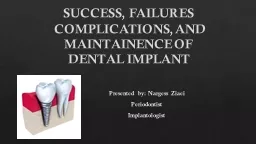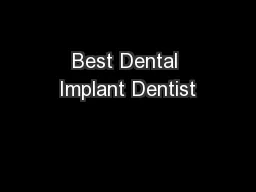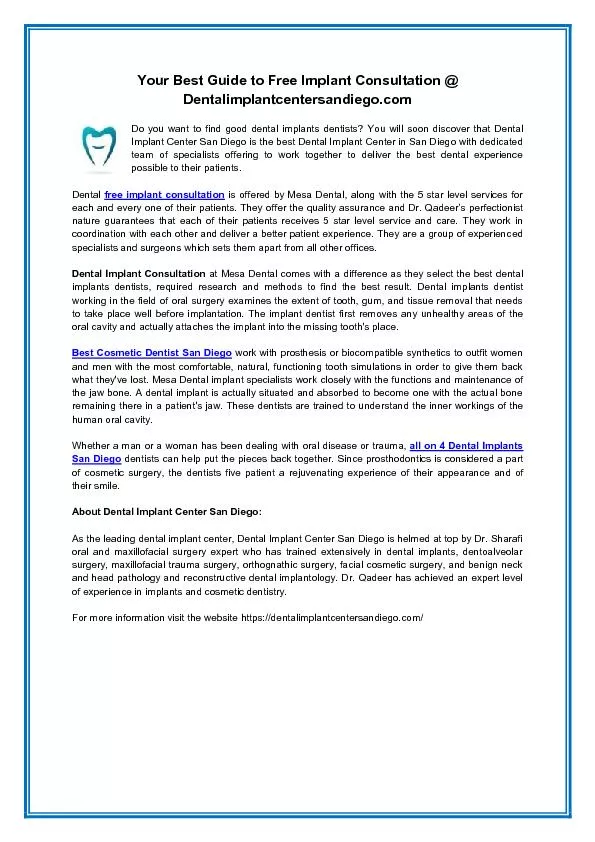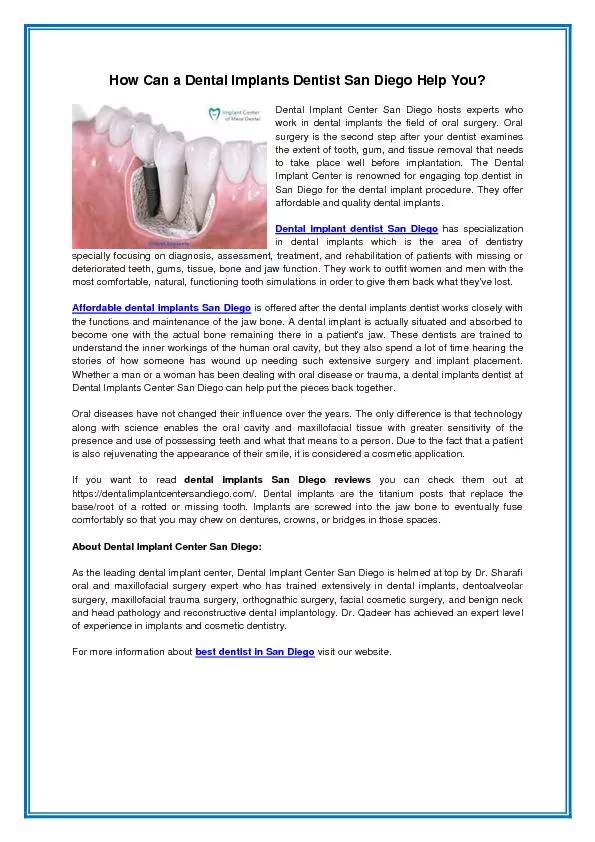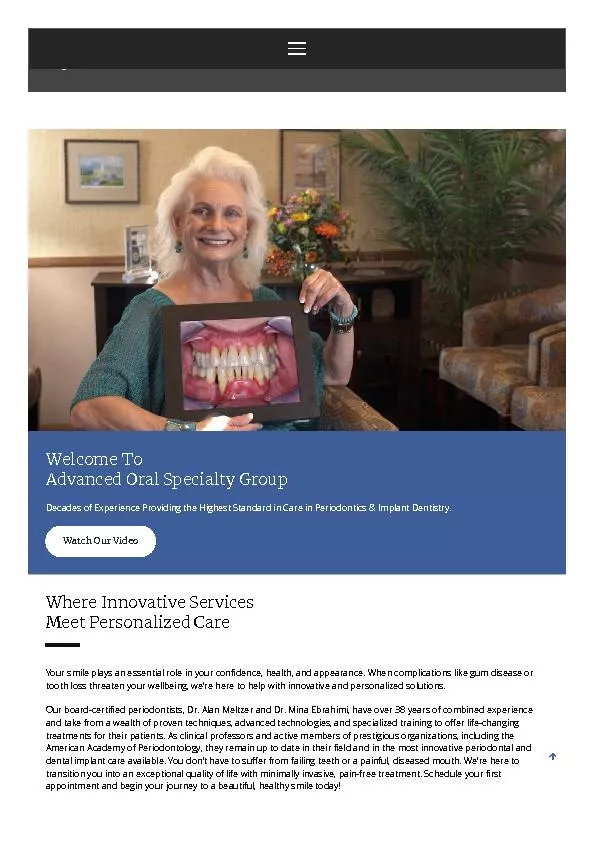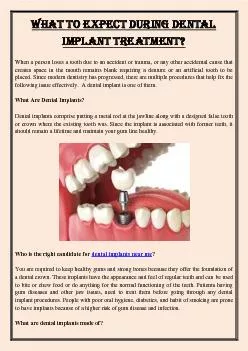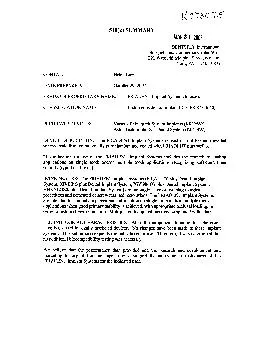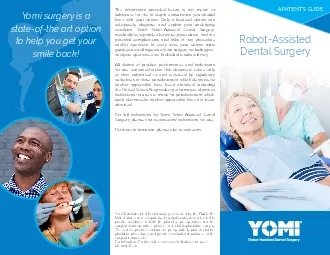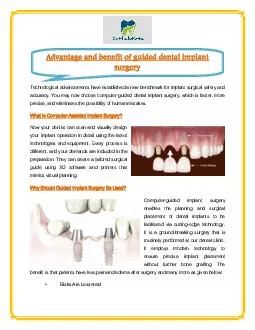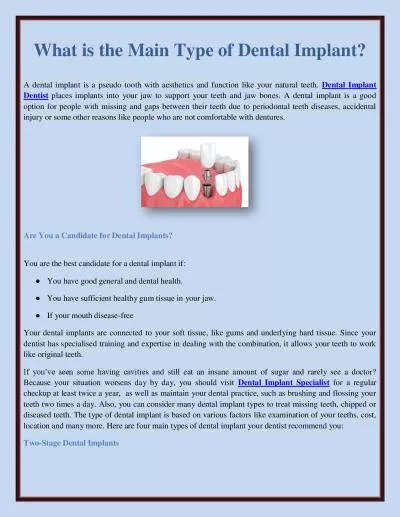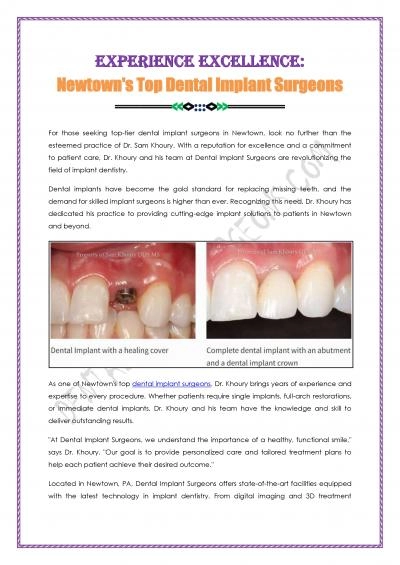PPT-Biological aspect of dental implant
Author : esther | Published Date : 2024-02-09
Presented by Rutuja dahiphale Contents Definition Implant geometry Macro design Implant surface characteristics micro design Osseointegration S oft tissue
Presentation Embed Code
Download Presentation
Download Presentation The PPT/PDF document "Biological aspect of dental implant" is the property of its rightful owner. Permission is granted to download and print the materials on this website for personal, non-commercial use only, and to display it on your personal computer provided you do not modify the materials and that you retain all copyright notices contained in the materials. By downloading content from our website, you accept the terms of this agreement.
Biological aspect of dental implant: Transcript
Download Rules Of Document
"Biological aspect of dental implant"The content belongs to its owner. You may download and print it for personal use, without modification, and keep all copyright notices. By downloading, you agree to these terms.
Related Documents




